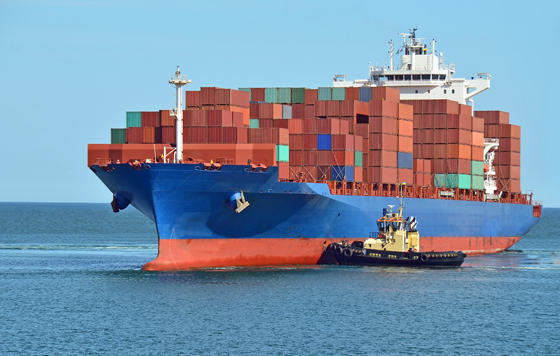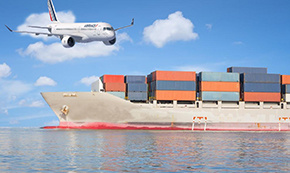All categories >
What are the main surcharges for full container load (FCL) sea freight? (Detailed explanation of international sea freight FCL costs)
Categories:
News Center
News
Time of issue:
2025-08-01 16:50
Views:

There are many types of surcharges for full container shipping. Below are some common surcharges and their detailed descriptions:
1. Bunker Adjustment Factor (BAF)
• Definition: A surcharge levied by shipping companies to compensate for increased fuel costs due to rising fuel prices in the international market.
• Collection Method: Generally, a fixed amount is charged per container type, such as several US dollars extra for each 20-foot or 40-foot container. It may also be charged as a certain percentage of the basic freight.
2. Currency Adjustment Factor (CAF)
• Definition: A surcharge levied by shipping companies to compensate for losses when the currency used for freight calculation is significantly devalued.
• Collection Method: Usually charged as a certain percentage of the freight.
3. Port Congestion Surcharge (PCS)
• Definition: If port congestion occurs due to strikes, equipment shortages, extreme weather, etc., resulting in extended ship berthing times, the shipping company will levy this charge to compensate for the additional costs.
• Collection Method: Generally charged at a fixed amount per container.
4. Peak Season Surcharge (PSS)
• Definition: A surcharge levied by shipping companies during peak shipping seasons (such as the Christmas season in Europe and America, before the Chinese Spring Festival, etc.) due to tight space and increased operating costs.
• Collection Method: Usually a certain percentage of the basic freight, or a fixed amount per container.
5. Terminal Handling Charge (THC)
• Definition: Includes Origin Terminal Handling Charge (OTHC) and Destination Terminal Handling Charge (DTHC), covering costs such as container loading and unloading, terminal weighing, and trailer usage.
• Collection Method: Charged according to container size; charging standards vary by port.
6. Discharge Port Change Surcharge
• Definition: This charge is levied by the shipping company if the cargo owner requests a change of discharge port after the goods have been shipped.
• Collection Method: Generally charged per container.
7. Port of Discharge Selection Surcharge
• Definition: Applicable to full container shipments with full container delivery. The shipper can select the discharge port from up to three delivery locations within the carrier's operating range, either direct or via transshipment, when booking.
• Collection Method: The shipping company charges this fee per container.
8. Direct Sailing Surcharge
• Definition: A surcharge levied when a certain amount of cargo destined for a non-basic port allows the shipping company to arrange direct sailing to that port without transshipment.
• Collection Method: Charged per container.
9. Deviation Surcharge
• Definition: If the normal shipping route is blocked and the vessel must deviate to transport the goods to the destination port, the shipping company will levy this charge to compensate for the additional transportation costs.
• Collection Method: Charged per container or as a certain percentage of the basic freight.
10. Container Imbalance Charge (CIC)
• Definition: Due to trade imbalances or seasonal variations causing an imbalance in cargo flow and containers, shipping companies levy this charge to compensate for the cost of repositioning empty containers.
• Collection Method: Charged per container.
11. Heavy Lift/Length Surcharge (HLA/LLA)
• Definition: For oversized or overweight cargo, shipping companies will levy this charge due to the increased difficulty or cost of transportation.
• Collection Method: Generally calculated according to the degree of overweight or overlength of the cargo.
12. Suez Canal Surcharge (SCS)
• Definition: Routes from Asia, Oceania, and East Africa to Europe generally pass through the Suez Canal. Shipping companies need to pay transit fees to the canal authorities when vessels pass through the Suez Canal. This surcharge transfers the cost to the cargo owner.
• Collection Method: Charged per container.
13. Panama Canal Surcharge (PTF)
• Definition: Routes from the Far East to the east coast of the United States generally pass through the Panama Canal. Shipping companies charge this fee to the cargo owner to cover the cost of the vessel passing through the Panama Canal.
• Collection Method: Charged per container.
14. Other Common Charges
• Document Fee: Fees charged by shipping companies or freight forwarders for handling shipping-related documents (such as bills of lading, cargo manifests, etc.). Typically around 100-300 RMB per shipment.
• Seal Fee: The fee for sealing a container. Usually around 10-20 USD per seal.
• Equipment Interchange Receipt (EIR) Fee: Fees incurred when handling container handover procedures. Generally around 20-50 USD.
Summary
There are many types of surcharges for full container shipping, and the charging standards vary depending on the shipping company, route, and port. Understanding these surcharges and their collection methods can help cargo owners better control transportation costs and avoid disputes caused by fees.
Keywords:
Additional charges for full container load sea freight










